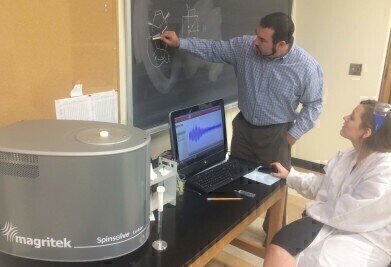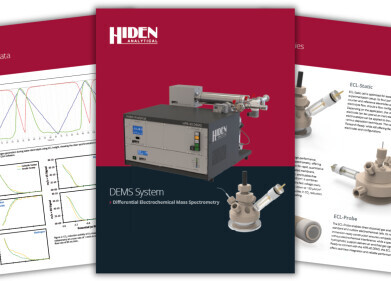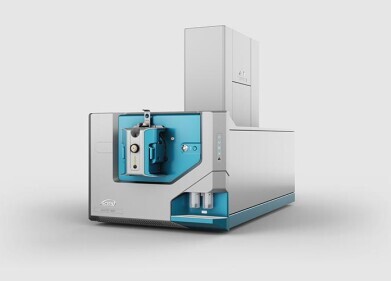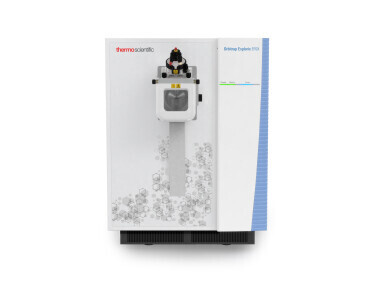Mass spectrometry & spectroscopy
Report on Benchtop NMR System use by Undergraduate Chemists at Samford University in their Research and Education Programs
Jan 26 2016
Magritek report on the use of their Spinsolve Benchtop NMR spectrometer in the Chemistry Department of Samford University. It is being applied in research in the areas of organic synthesis, reaction methodology and medicinal chemistry.
Dr Paul Wiget is an assistant professor of chemistry at Samford University in Birmingham, Alabama. He first became interested in the Spinsolve instrument when he began interviewing for his current position knowing that his research interests would require a work-around for the lack of a local high-field NMR. Spinsolve, as a two-channel system with indirect-detection, was potentially the answer. The ability to perform 13C, DEPT, HSQC, HMBC experiments was most important. Dr Wiget also saw the scripting function as extraordinarily helpful as it would enable the running of a HSQC experiment and followed by an HMBC routine allowing extraction from the 13C data overnight even when measuring dilute samples.
Dr Wiget describes his array of experiments used in both research and teaching. “We use NMR in our second semester organic laboratory as means to adequately characterise the intermediate and product of a two-step synthesis, an independent project that makes up about two thirds of the students' grade. We have found that often the carbon channel is most useful in this project due to the inherently low dispersion associated with the proton channel; this is in conjunction with IR, GC-MS, UV-Vis, and melting-point analysis. We also have fluorescence and ICP atomic absorption available.
“We also use the reaction monitoring function to obtain kinetic data for our physical chemistry course. This is particularly useful because the experiment we monitor is the esterification of triflouroacetic acid with various alcohols. With the simultaneous 19F and 1H ‘nested’ monitoring scripts, we can get reinforcing data by monitoring the reaction progress via two nuclei instead of just one. Additionally, when the dispersion issue arises during that experiment, we no longer have to abandon the more substituted alcohols because we can simply monitor the reaction via the 19F spectra.”
Continuing to describe the benefits of Spinsolve, Dr Wiget said: “the greatest benefit of the system is its ease of use and low-level of training for student operation. We are also very fond of no longer needing an air source for spinning. The instrument is very fast and reliable compared to the old, larger, 60 MHz instrument we had.“
Digital Edition
Lab Asia Dec 2025
December 2025
Chromatography Articles- Cutting-edge sample preparation tools help laboratories to stay ahead of the curveMass Spectrometry & Spectroscopy Articles- Unlocking the complexity of metabolomics: Pushi...
View all digital editions
Events
Jan 21 2026 Tokyo, Japan
Jan 28 2026 Tokyo, Japan
Jan 29 2026 New Delhi, India
Feb 07 2026 Boston, MA, USA
Asia Pharma Expo/Asia Lab Expo
Feb 12 2026 Dhaka, Bangladesh



















